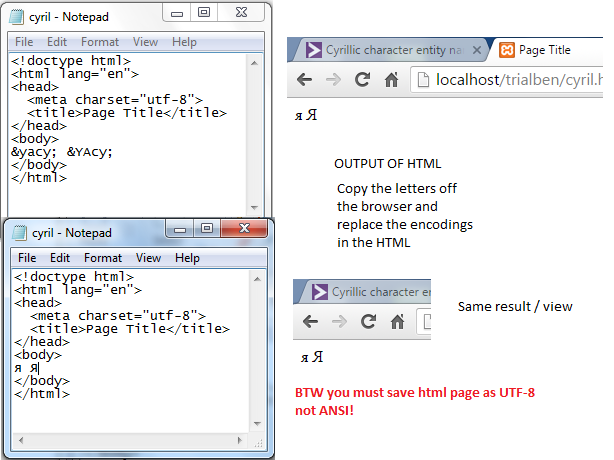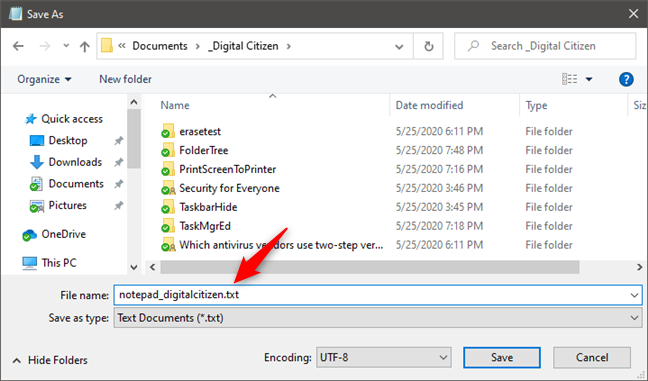

- #TEXTPAD 8 NOT SAVING CYRILLIC HOW TO#
- #TEXTPAD 8 NOT SAVING CYRILLIC DOWNLOAD#
- #TEXTPAD 8 NOT SAVING CYRILLIC WINDOWS#
It does this is by using an encoding standard.Īn encoding standard is a numbering scheme that assigns each text character in a character set to a numeric value. Your computer translates the numeric values into visible characters. What appears to you as text on the screen is actually stored as numeric values in the text file. Look up encoding standards that are available in Word What do you want to do?Ĭhoose an encoding standard when you open a fileĬhoose an encoding standard when you save a file
#TEXTPAD 8 NOT SAVING CYRILLIC HOW TO#
When you or someone else opens a text file in Microsoft Word or in another program - perhaps on a computer that has system software in a language that is different from the language that was used to create the file - the encoding standard helps that program determine how to represent the text so that it is readable.
#TEXTPAD 8 NOT SAVING CYRILLIC DOWNLOAD#
However, if you share text files with people who work in other languages, download text files across the Internet, or share text files with other computer systems, you may need to choose an encoding standard when you open or save a file. Typically, you can share text files without worrying about the underlying details of how the text is stored.

Trying either ISO-8859-15 or WINDOWS-1252 for a Persian text was obviously an impasse: these encodings merely do not contain any Persian letter.Word for Microsoft 365 Word 2021 Word 2019 Word 2016 Word 2013 Word 2010 Word 2007 Word Starter 2010 More. Not some (naïve) guesses based on mojibake characters in programs that try (but fail) to read it. or -f) one must specify encoding with which the file is saved (by the program that created it).

Original poster is also confused with semantic of text recoding tools (recode, iconv). To convert to any encoding (UTF-8 or otherwise), regardless of the current locale, one can say: iconv -f Windows-1256 Windows_file.txt -t $ This one assumes that the LANG environment variable is set to a UTF-8 locale. (denounced upon original poster’s complaints see comments) iconv -f Windows-1256 Windows_file.txt > UTF8_file.txt So it can be deciphered by command similar to OP tried, but with different charsets.
#TEXTPAD 8 NOT SAVING CYRILLIC WINDOWS#
These Windows files with Persian text are encoded in Windows-1256. If someone needs a test-case to examine different solutions, the above example is accessible via this link. But nevertheless, I will also be glad to know about a working solution that requires the source encoding to be provided. One important aspect of being "simple" is that the user is not required to determine the source encoding rather the source encoding should be automatically detected by the tool and only the target encoding should be provided by the user. I'm using Ubuntu-14.04 and I'm looking for a simple solution (either GUI or CLI) that works just as Notepad++ does. $ iconv -f WINDOWS-1252 -t UTF-8 file.txt > out.txt $ iconv -f ISO8859-15 -t UTF-8 file.txt > out.txt I've tested many commands, including the followings, and all have failed: $ recode ISO-8859-15.UTF8 file.txt Most of all, I've seen people suggest iconv and recode but I have had no luck with these tools. I've searched a lot for a similar solution on GNU/Linux, but unfortunately the suggested solutions (e.g this question) don't work. In Windows, one can fix this easily using Notepad++ to convert the encoding to UTF-8, like below:Īnd the correct readable result is like this:

These files are created on Windows, and saved with an unsuitable encoding (seems to be ANSI), which looks gibberish and unreadable, like this: I frequently encounter text files (such as subtitle files in my native language, Persian) with character encoding problems.


 0 kommentar(er)
0 kommentar(er)
